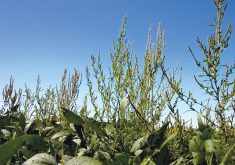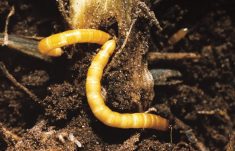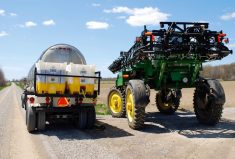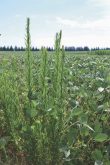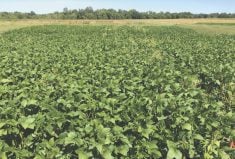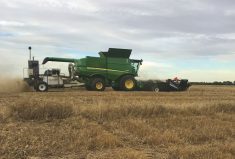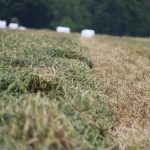Carabid beetles, also known as ground beetles, are routinely overlooked as an important weed control agent, says Christian Willenborg, associate professor and head of the Department of Plant Sciences at the University of Saskatchewan.
“In Western Canada, we don’t really have a feeling that carabids are making a dent in our weed seed populations, but in fact they are,” Willenborg says.
Willenborg is the author of a recent research study looking at carabids and crickets and weed seed predation in four conventional pulse crops — lentil, pea, faba bean and soybeans.
Read Also

Agronomists share tips for evaluating new crop products and tech: Pt. 3
With new products, new production practices and new technology converging on the agriculture industry at a frenetic pace in recent…
The study aimed to shed light on the importance of cropping history on the beneficial insect community, as a preliminary step to understanding the extent to which carabids are responsible for weed seed predation, and how producers could boost it in their fields.
“Seed predation seems to be viewed as theoretical. That’s always been a challenge and it’s hard to convince people in Western Canada that it’s not,” Willenborg says.
He has been studying the subject for more than 10 years but has never had significant sources of funding beyond NSERC grants, to pursue the work, partly because it’s seen as theoretical, he says.
But research from other parts of the world shows major practical benefits from encouraging beneficial insects in the field. In the U.K., for example, producers are encouraged through subsidies to protect insect habitat by maintaining field margins and hedgerows as “beetle banks.”
This emphasis on beneficial insects is based on a growing body of research. Willenborg points to two large European studies that show carabids can regulate the weed seed bank.
In one study, conducted in 257 conventionally managed U.K. fields, researchers found that carabids regulated seed bank abundance in all crops and on total seed bank abundance in spring maize and winter oilseed rape. The effects were “robust across fields with differing pesticide management and between regions of the U.K.”
In another study, conducted in 67 cereal fields across four European countries, researchers found carabids are an important contributor to predation and regulation of weed seeds across the continent.
European research points to two key management approaches for boosting beetle populations: maintaining hedgerows, and seeding one- or two-metre strips every 50 acres or so to perennial native grasses — called “beetle banks” — where the insects can overwinter.
Crop type influences beetle numbers
Willenborg’s study looked at carabid density in 28 commercial pulse fields. They divided fields into grids and looked at “cells” at least 50 metres from field edges. Within each cell they created a mini experiment including a pitfall trap — a red solo cup buried to the rim in soil, containing ethanol to kill and preserve beetles that fell in, as well as a seed card with a variety of weed seeds glued to it so they could measure seed removal.
The researchers learned that previous crop types mattered more in explaining the carabid community than the current pulse crop in the field. In particular, they found that fields previously planted to canola had a relatively high activity-density of ground beetles in the genus Amara, which means crop rotations could be adjusted to encourage these species. Amara was the most important factor in the consumption of volunteer canola seeds.
“In other words,” the researchers write, “future crop rotations may be planned so that granivorous (seed-eating) carabids are highly abundant during crops in which high weed pressure is expected to be an issue.”
But they also found a “relatively weak” association between activity-density and weed seed predation, Willenborg says.
“Carabids consumed a huge amount of seed, between 25 to 50 per cent of the seeds we were putting out there, but it was weakly correlated with carabid activity-density. This could be because some of the beetles were shifting from a seed-based to an insect-based diet.”
Besides previous crop type, many other factors can also influence carabid activity-density, including soil temperature and humidity, and habitat types in surrounding areas. Many of these factors can be adjusted with management, Willenborg says.
“If you’re going to encourage carabids, they’ll be higher after a canola crop, and if you want to (promote) species eating that volunteer canola, you’d have to do other things we didn’t do in the project, like seeding grassy margins, narrowing row spacing (and) seeding a cover crop, which would increase the number of carabids in general.”
He adds that zero tillage is a huge step in the right direction, as carabid beetles thrive in no-till environments, in part because weed seeds are concentrated on the soil surface.
Maintaining field margins and marginal areas near fields, as well as shelterbelts, hedgerows, shrubs and wetlands also boosts beetle populations. “Habitat for seed predators is an integral component of the agro ecosystem,” Willenborg says.




